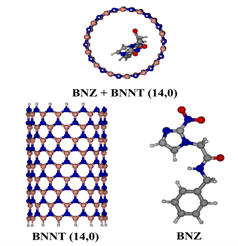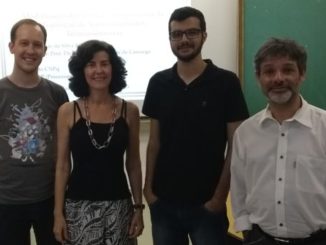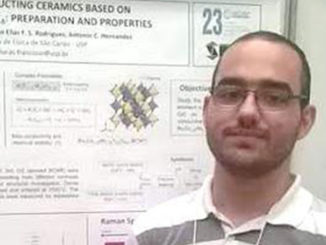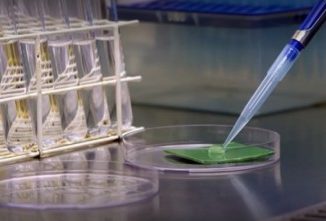
O doutorando no Programa de Pós-Graduação em Química (PPGQ – UFSCar) e pesquisador vinculado ao Centro de Desenvolvimento de Materiais Funcionais (CDMF), Jeziel Rodrigues dos Santos, apresentou nesta terça-feira (31) a sua pesquisa durante a XIX Brazil MRS Meeting, reunião anual promovida pela Sociedade Brasileira de Pesquisa em Materiais (SBPMat).
“Theoretical study of the encapsulation of the drug Benznidazole in Boron Nitride Nanotubes” é o título do trabalho que, a partir de simulações quânticas, investiga a viabilidade do benznidazol (BNZ) ser encapsulado em nanotubos de nitreto de boro (BNNT), reduzindo assim suas limitações, como a baixa solubilidade aquosa, baixa biodisponibilidade e considerável toxicidade. A apresentação aconteceu remotamente durante a sessão de pôsteres do Simpósio Q “Computational Design for Development of Functional Materials – Synergy Between Theoreticians and Experimentalists”.
Também participam da autoria do estudo apresentado os pesquisadores Osmair Vital de Oliveira, José Divino dos Santos e Elson Longo.
Confira abaixo o resumo do trabalho:
Resumo
The most recommended treatment for the acute phase of chagas disease, caused by the protozoan Trypanosoma cruzi, whose vector is the blood-sucking triatomine, is the drug benznidazole (BNZ). However, its use has some limitations, such as low aqueous solubility, low bioavailability and considerable toxicity. In order to overcome these limitations, the use of nanocarriers is an interesting strategy that has been used in the delivery of drugs. Therefore, here quantum simulations, using the theory of functional density (DFT), with the hybrid functional B3LYP and with sets of 6-31G* bases were used to study the viability of BNZ encapsulation in Boron nitride nanotubes (BNNT). The Grimme method (GD3) was used to correct dispersion. All simulations were carried out in a vacuum and in a solvent medium considering the Polarization Continuous Model (PCM). For the formation of the BNZ-BNNT complex, a formation energy (Ef) of – 61.43 kcal/mol was observed, being characterized as an exothermic process. This stabilization can be explained by the parallel positioning of the phenyl ring of the BNZ with the rings of the internal surface of the BNNT promoting interactions of the π-π type. The reactivity parameters, such as electronic affinity, ionization energy, band gap and molecular descriptors such as global hardness, electronegativity, electronic chemical potential and electrophilicity were calculated based on the energies of the HOMO and LUMO Orbitals. The results indicate, through changes in chemical hardness and chemical potential, that the complex formed has a high chemical activity. The solvation enthalpy was calculated, indicating a spontaneous process of solubility in aqueous medium. Thus, we highlight BNNT as a promising nanocarrier for BNZ.
______________________________________________________________________________
CDMF
O CDMF é um dos Centros de Pesquisa, Inovação e Difusão (Cepids) apoiados pela Fundação de Amparo à Pesquisa do Estado de São Paulo (Fapesp), e recebe também investimento do Conselho Nacional de Desenvolvimento Científico e Tecnológico (CNPq), a partir do Instituto Nacional de Ciência e Tecnologia dos Materiais em Nanotecnologia (INCTMN).




